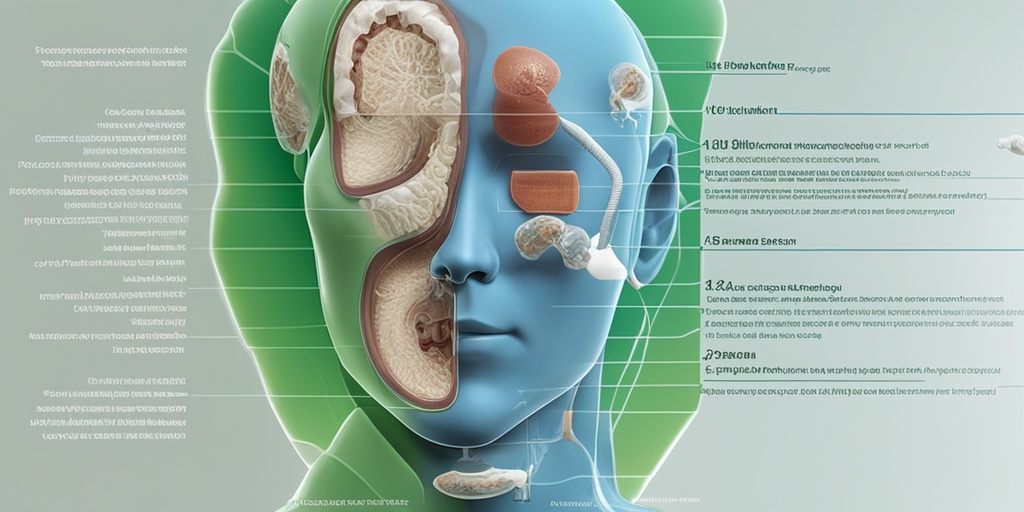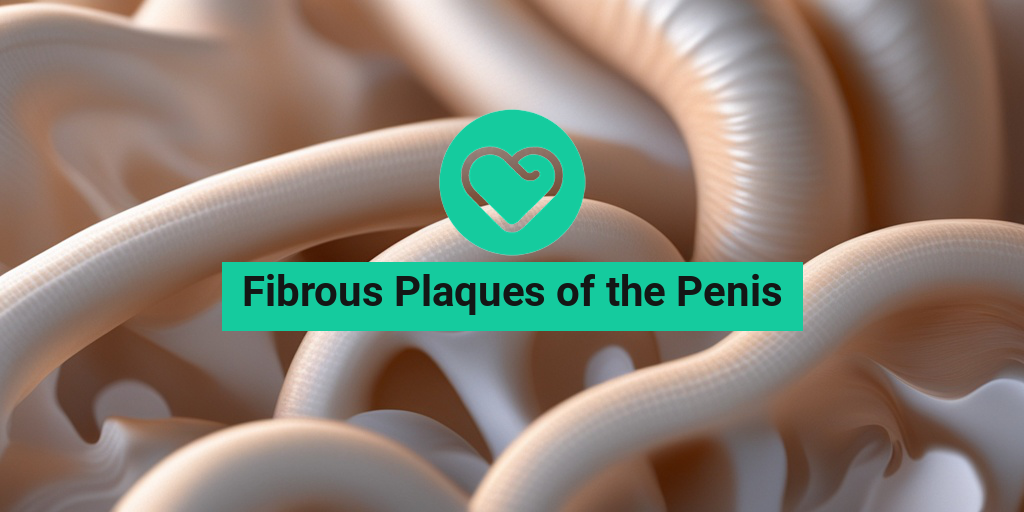“`html
What Are Fibrous Plaques?
Fibrous plaques of the penis, often associated with a condition known as Peyronie’s disease, are abnormal fibrous tissue formations that develop within the tunica albuginea, the fibrous sheath surrounding the erectile tissue of the penis. These plaques can lead to various complications, including penile curvature, pain during erections, and difficulties with sexual intercourse.
Understanding the Formation of Fibrous Plaques
The exact cause of fibrous plaques is not fully understood, but several factors may contribute to their development:
- Trauma or Injury: Repeated trauma to the penis, whether from sexual activity or other physical impacts, can trigger an inflammatory response, leading to plaque formation.
- Genetic Predisposition: Some individuals may have a genetic tendency to develop fibrous plaques, making them more susceptible to Peyronie’s disease.
- Connective Tissue Disorders: Conditions that affect connective tissues, such as Dupuytren’s contracture, may increase the risk of developing fibrous plaques.
How Do Fibrous Plaques Affect the Penis?
As fibrous plaques form, they can disrupt the normal elasticity of the penile tissue. This disruption can lead to:
- Penile Curvature: The most common symptom, where the penis bends during erection due to uneven plaque distribution.
- Pain: Some individuals may experience pain during erections or even at rest.
- Difficulty Achieving Erection: In some cases, the presence of fibrous plaques can interfere with the ability to achieve or maintain an erection.
Fibrous Plaques Symptoms
Recognizing the symptoms of fibrous plaques is crucial for early diagnosis and treatment. Here are the most common symptoms associated with this condition:
1. Penile Curvature
One of the hallmark symptoms of fibrous plaques is a noticeable curvature of the penis, which can vary in severity. This curvature may be more pronounced during an erection and can lead to discomfort or difficulty during sexual activity.
2. Pain or Discomfort
Many individuals with fibrous plaques report experiencing pain, particularly during erections. This pain can range from mild to severe and may also occur during sexual intercourse.
3. Changes in Penile Length
Some men may notice a reduction in penile length as a result of the plaque formation. This can be distressing and may impact self-esteem and sexual confidence.
4. Induration or Hard Lumps
Upon examination, individuals may feel hard lumps or areas of induration along the shaft of the penis. These plaques can be palpable and may vary in size and consistency.
5. Erectile Dysfunction
In some cases, the presence of fibrous plaques can lead to erectile dysfunction (ED). This can be due to both physical changes in the penis and psychological factors stemming from the condition.
6. Emotional and Psychological Impact
The symptoms of fibrous plaques can take a toll on mental health. Many individuals experience anxiety, depression, or a decrease in sexual satisfaction due to the physical changes and challenges associated with the condition.
If you suspect you have fibrous plaques or are experiencing any of the symptoms mentioned above, it is essential to consult a healthcare professional. Early intervention can lead to better outcomes and help manage the condition effectively.
For more information and resources on fibrous plaques of the penis and related health concerns, consider visiting Yesil Health AI, where you can find evidence-based answers to your health questions.
Remember, you are not alone in this journey, and support is available! 🌟
“`

“`html
Fibrous Plaques Causes
Fibrous plaques of the penis, commonly associated with Peyronie’s disease, can be a source of concern for many men. Understanding the causes of these plaques is crucial for effective management and treatment. While the exact cause of fibrous plaques remains somewhat elusive, several factors have been identified that may contribute to their development.
Trauma or Injury
One of the most recognized causes of fibrous plaques is trauma or injury to the penis. This can occur during sexual activity, sports, or even from accidents. When the penis experiences trauma, it can lead to localized inflammation and the formation of scar tissue, which manifests as fibrous plaques. It’s important to note that even minor injuries can sometimes lead to significant issues down the line.
Genetic Predisposition
Genetics may also play a role in the development of fibrous plaques. Some studies suggest that individuals with a family history of Peyronie’s disease or similar conditions may be more susceptible to developing fibrous plaques. If you have relatives who have experienced this issue, it might be worth discussing with your healthcare provider.
Connective Tissue Disorders
Men with certain connective tissue disorders, such as Dupuytren’s contracture, may be at a higher risk for developing fibrous plaques. These conditions affect the body’s connective tissues, leading to abnormal tissue growth and scarring. If you have a known connective tissue disorder, it’s essential to monitor any changes in penile health closely.
Age and Hormonal Changes
As men age, the likelihood of developing fibrous plaques increases. Hormonal changes, particularly a decrease in testosterone levels, may contribute to the weakening of the penile tissue, making it more susceptible to injury and plaque formation. This is why many men notice symptoms of Peyronie’s disease in their 40s or 50s.
Other Medical Conditions
Several medical conditions have been linked to the development of fibrous plaques, including:
- Diabetes: This condition can lead to vascular changes and reduced blood flow, increasing the risk of plaque formation.
- Hypertension: High blood pressure can affect the blood vessels and contribute to tissue damage.
- Hyperlipidemia: Elevated cholesterol levels may also play a role in the development of fibrous plaques.
Fibrous Plaques Risk Factors
Understanding the risk factors associated with fibrous plaques of the penis can help in early detection and intervention. While some factors are beyond our control, others can be managed through lifestyle changes and medical care.
Age
As mentioned earlier, age is a significant risk factor. The incidence of fibrous plaques tends to increase with age, particularly in men over 40. Regular check-ups and open discussions with healthcare providers can help in early identification of any issues.
Family History
If you have a family history of Peyronie’s disease or other connective tissue disorders, your risk of developing fibrous plaques may be higher. Being aware of this can encourage proactive monitoring and discussions with your doctor.
Lifestyle Choices
Certain lifestyle choices can increase the risk of developing fibrous plaques:
- Smoking: Tobacco use can impair blood flow and contribute to tissue damage.
- Obesity: Excess weight can lead to various health issues, including diabetes and hypertension, which are linked to fibrous plaques.
- Poor Diet: A diet high in processed foods and low in essential nutrients can negatively impact overall health and increase the risk of conditions that contribute to plaque formation.
Medical Conditions
As previously discussed, certain medical conditions such as diabetes, hypertension, and hyperlipidemia can increase the risk of fibrous plaques. Managing these conditions through medication, diet, and exercise is crucial for reducing your risk.
Trauma and Repetitive Stress
Men who engage in activities that put repetitive stress on the penis, such as certain sports or vigorous sexual activity, may be at a higher risk for developing fibrous plaques. Taking precautions during these activities can help minimize the risk of injury.
In conclusion, understanding the causes and risk factors associated with fibrous plaques of the penis is essential for prevention and management. If you have concerns or notice any symptoms, don’t hesitate to consult with a healthcare professional for guidance and support. Remember, early intervention can make a significant difference! 💪
“`

“`html
Fibrous Plaques Diagnosis
Diagnosing fibrous plaques of the penis can be a complex process, often requiring a thorough understanding of the patient’s medical history and symptoms. These plaques are typically associated with a condition known as Peyronie’s disease, which can lead to curvature of the penis and discomfort during erections. Here’s how healthcare professionals typically approach the diagnosis:
Initial Consultation
During the initial consultation, a healthcare provider will ask about your symptoms, including:
- Duration of symptoms
- Presence of pain during erections
- Changes in penile curvature
- Any history of trauma to the penis
It’s essential to be open and honest during this discussion, as it helps the doctor understand the severity and impact of the condition on your life.
Physical Examination
A physical examination is a crucial step in diagnosing fibrous plaques. The doctor will typically perform the following:
- Examine the penis for any visible plaques or lumps
- Assess the curvature of the penis in both flaccid and erect states
- Check for any signs of pain or discomfort
This examination helps in identifying the presence of fibrous tissue and understanding how it affects penile function.
Imaging Tests
In some cases, imaging tests may be necessary to confirm the diagnosis. These tests can include:
- Ultrasound: This is the most common imaging test used to visualize the plaques and assess blood flow to the penis.
- MRI: Magnetic resonance imaging can provide detailed images of the soft tissues, helping to identify the extent of the plaques.
These imaging techniques are non-invasive and can provide valuable information about the condition.
Self-Assessment Tools
Patients may also benefit from self-assessment tools, such as questionnaires that evaluate the severity of symptoms and their impact on quality of life. These tools can help both the patient and the healthcare provider understand the condition better and tailor treatment options accordingly.
Fibrous Plaques Treatment Options
Once diagnosed, there are several treatment options available for managing fibrous plaques of the penis. The choice of treatment often depends on the severity of the condition, the presence of pain, and the degree of curvature. Here are some common treatment options:
Medications
Medications can be an effective first-line treatment for managing symptoms associated with fibrous plaques. Some commonly prescribed medications include:
- PDE5 inhibitors: Drugs like Viagra (sildenafil) and Cialis (tadalafil) can help improve blood flow and may alleviate some symptoms.
- Intralesional injections: Medications such as Xiaflex can be injected directly into the plaque to help break it down and reduce curvature.
These medications can provide relief, but they may not work for everyone.
Physical Therapy
Physical therapy techniques, including penile traction therapy, can help in managing the curvature associated with fibrous plaques. Devices like the RestoreX are designed to stretch the penis gently, which may help in reducing curvature over time. Regular use of these devices can lead to significant improvements for some patients.
Surgery
In cases where the curvature is severe and causes significant discomfort or functional issues, surgical options may be considered. Surgical procedures can include:
- Plication surgery: This involves shortening the side of the penis opposite the plaque to straighten it.
- Grafting: In more severe cases, grafting techniques may be used to replace the plaque with tissue from another part of the body.
Surgery is typically considered a last resort and is usually recommended only after other treatment options have been exhausted.
Lifestyle Modifications
In addition to medical treatments, certain lifestyle modifications can support overall penile health. These may include:
- Maintaining a healthy diet rich in proteins and healthy fats
- Engaging in regular physical activity
- Avoiding smoking and excessive alcohol consumption
These changes can improve blood flow and overall health, potentially aiding in the management of fibrous plaques.
Understanding the diagnosis and treatment options for fibrous plaques of the penis is crucial for effective management. If you suspect you have this condition, consult a healthcare professional for personalized advice and treatment options. 🌟
“`

“`html
Fibrous Plaques Home Remedies
Dealing with fibrous plaques of the penis can be challenging, but there are several home remedies that may help alleviate symptoms and promote healing. While these remedies are not a substitute for professional medical advice, they can complement your treatment plan. Here are some effective home remedies to consider:
1. Dietary Adjustments
Your diet plays a crucial role in overall health, including the health of your penis. Incorporating certain foods can help reduce inflammation and promote healing:
- Omega-3 Fatty Acids: Foods rich in omega-3s, such as salmon, walnuts, and flaxseeds, can help reduce inflammation.
- Antioxidant-Rich Foods: Berries, leafy greens, and nuts are packed with antioxidants that can support tissue health.
- Protein and Healthy Fats: Consuming sufficient amounts of protein and healthy fats can aid in tissue repair and overall health.
2. Herbal Remedies
Some herbs are believed to have anti-inflammatory properties that may help with fibrous plaques. Consider the following:
- Turmeric: Known for its anti-inflammatory properties, turmeric can be consumed as a spice or in supplement form.
- Ginger: Ginger can help improve circulation and reduce inflammation. Try adding fresh ginger to your meals or drinking ginger tea.
- Ginkgo Biloba: This herb is thought to improve blood flow and may help with symptoms associated with fibrous plaques.
3. Regular Exercise
Engaging in regular physical activity can improve circulation and overall health. Aim for at least 30 minutes of moderate exercise most days of the week. Activities like walking, swimming, or cycling can be beneficial. 🏃♂️
4. Stress Management
Stress can exacerbate symptoms of fibrous plaques. Incorporating stress-reducing techniques into your daily routine can be helpful:
- Meditation: Practicing mindfulness or meditation can help reduce stress levels.
- Yoga: Yoga not only promotes relaxation but also improves flexibility and circulation.
- Deep Breathing Exercises: Simple deep breathing techniques can help calm your mind and body.
5. Warm Compresses
Applying a warm compress to the affected area can help improve blood flow and reduce discomfort. Use a clean cloth soaked in warm water, wring it out, and apply it gently to the area for 10-15 minutes. 🌡️
Fibrous Plaques Outlook and Management
The outlook for individuals with fibrous plaques of the penis can vary significantly based on several factors, including the severity of the condition and the effectiveness of the chosen management strategies. Understanding the potential outcomes and management options is essential for those affected.
Understanding the Condition
Fibrous plaques are typically associated with Peyronie’s disease, which can lead to curvature of the penis and discomfort during erections. While the condition can be distressing, many individuals find that symptoms can improve over time. It’s important to note that not all cases require aggressive treatment.
Management Strategies
Effective management of fibrous plaques often involves a combination of medical treatments and lifestyle changes:
- Medications: Some medications, such as Xiaflex, may be prescribed to help break down the plaques and reduce curvature.
- Pain Management: Over-the-counter pain relievers can help manage discomfort associated with the condition.
- Physical Therapy: Certain exercises and stretches may help improve flexibility and reduce curvature.
Regular Monitoring
Regular follow-ups with a healthcare provider are crucial for monitoring the condition. This allows for timely adjustments to the treatment plan based on the progression of symptoms. Keeping a journal of symptoms can also be beneficial for discussions with your doctor.
Emotional Support
Living with fibrous plaques can take an emotional toll. Seeking support from friends, family, or support groups can provide comfort and understanding. Many individuals find it helpful to connect with others who are experiencing similar challenges. 💬
In conclusion, while fibrous plaques of the penis can be a source of concern, there are various home remedies and management strategies available. By taking proactive steps and seeking support, individuals can navigate this condition more effectively.
“`

“`html
Frequently Asked Questions about Fibrous Plaques of the Penis
What are fibrous plaques of the penis?
Fibrous plaques of the penis are abnormal tissue formations that can develop within the penile shaft. These plaques can lead to curvature, pain, and other complications during erections. They are often associated with a condition known as Peyronie’s disease.
What causes fibrous plaques to form?
The exact cause of fibrous plaques is not fully understood, but they may result from trauma to the penis, genetic factors, or certain medical conditions. In some cases, the plaques can develop without any identifiable cause.
How can I tell if I have fibrous plaques?
Common symptoms include:
- Curvature of the penis during erections
- Pain or discomfort
- Presence of lumps or hardened areas along the shaft
- Changes in the size or shape of the penis
If you experience any of these symptoms, it is important to consult a healthcare professional for a proper diagnosis.
Are fibrous plaques treatable?
Yes, there are several treatment options available, including:
- Medications such as Xiaflex to help break down the plaques
- Penile traction therapy to improve curvature
- Surgery in severe cases
Consulting with a urologist can help determine the best course of action for your specific situation.
Can lifestyle changes help with fibrous plaques?
While lifestyle changes alone may not eliminate fibrous plaques, maintaining a healthy diet, exercising regularly, and managing stress can contribute to overall penile health. Some individuals find that a balanced intake of protein and healthy fats supports their condition.
Is it normal for symptoms to fluctuate?
Yes, many individuals report that the severity of symptoms can vary over time. Some may experience periods of improvement followed by flare-ups. Keeping track of your symptoms and discussing them with your healthcare provider can help manage the condition effectively.
What should I do if I notice changes in my symptoms?
If you notice any changes, such as increased curvature, pain, or new lumps, it is crucial to seek medical advice. Early intervention can often lead to better outcomes.
Are there any support groups for those with fibrous plaques?
Yes, there are various online forums and support groups where individuals can share their experiences and seek advice. Engaging with others who understand your situation can provide emotional support and helpful information.
Can I recover fully from fibrous plaques?
While complete recovery may not be possible for everyone, many individuals find relief from symptoms and improvement in their condition with appropriate treatment. It’s important to remain hopeful and work closely with your healthcare provider.
“`




